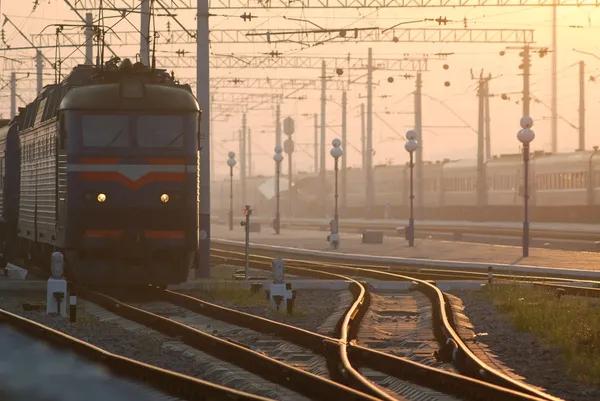Uzbekistans Ambitious Drive Towards a Sustainable and Modern Transport Network




Uzbekistan's Transport Network Vision
Uzbekistan is poised on the brink of a transportation revolution. This doubly landlocked country in Central Asia is striving to become the region's main transit hub by transforming its transport sector. A comprehensive strategy centered around electrification of railways, upgrading roads, and diversifying fuel usage reveals the nation's ambitious path forward. With the transport sector already generating 8% of GDP and employing over a million people, this transformation represents a pivotal economic opportunity.
Roads are the backbone of Uzbekistan's transport infrastructure, making up 97% of the network and consuming an overwhelming portion of energy resources. Remarkably, 95% of roads are hardened surfaces, and 83% are currently in good condition. However, road density presents a significant deficit compared to more developed countries, creating pressing expansion needs.
The challenges are substantial: rapid growth in freight transport demands that the road network increase fivefold by 2030 and thirteenfold by 2050. Past policies favored expansion over maintenance, creating funding disparities that now threaten long-term sustainability. Although fuel taxes and charges are levied, these funds fall short of being channeled directly into maintenance programs. Without strategic investment and diligent upkeep, the nation risks traffic gridlocks and deteriorating road conditions that could undermine economic benefits.
While railways account for just 3% of transport infrastructure, they are critical for logistical efficiency and represent the future of sustainable freight transport. More than half of Uzbekistan's 4,718 kilometers of heavy rail is electrified, a rare achievement in the region that positions the country as a potential leader in low-emission transport.
However, modernization challenges loom large. An alarming 90% of rolling stock is nearing the end of its service life, creating an urgent need for renewal within the next decade. Modern, electrified trains offer a cost-effective, low-emission alternative for long-distance transport, helping overcome the "tyranny of distances" that challenges logistics in landlocked areas. This railway transformation could make Uzbekistan a pioneer in Central Asian freight innovation, significantly reducing both costs and emissions.
The expansion of the Tashkent metro signals strong commitment to public transit development. Despite this progress, transit density remains low at only 4 kilometers of rapid transit per million inhabitants, falling short of Asian and European standards. The focus is shifting toward reducing car usage, enhancing bus and metro systems, and fostering cycling infrastructure.
Significant policy changes have promoted inclusivity, notably the 2024 decision allowing women to drive heavy vehicles. This progressive step represents broader efforts toward modernization and gender equality in the transport sector. Urban strategies emphasize building comprehensive public transport networks that can accommodate growing populations while reducing environmental impact.
Uzbekistan's aviation sector is experiencing remarkable growth, with improved international connections paving the way for enhanced commerce and tourism. The country's strategic location in Central Asia provides unique opportunities to serve as an air transit hub connecting Europe, Asia, and the Middle East.
Further airport modernization initiatives could propel the nation toward becoming a significant regional aviation center. Enhanced airport infrastructure would unlock substantial commercial and tourism potential, solidifying Uzbekistan's position as a pivotal transit point and supporting broader economic development goals throughout the region.
Uzbekistan is making unprecedented strides in energy diversification within its transport sector. Transport energy demand has surged at an extraordinary annual rate of 12% since 2010, placing it among the fastest-growing globally. The country has managed a remarkable fuel transition, with natural gas now powering 57% of transport needs, surging from just 2.7% in 2010.
This transformation represents one of the fastest transitions in global transport fuel history. The government actively advocates for electric vehicles, pushing for domestic production partnerships to meet future demands. Despite recent increases in import charges for electric vehicles, this strategic approach aims to build a self-sufficient, sustainable transport ecosystem that delivers both environmental and economic benefits.
Road safety challenges persist as a significant concern, with accidents currently costing approximately 3% of GDP annually. Road transport is responsible for 98% of transport emissions, underscoring the urgent need for comprehensive environmental measures. While PM10 emissions have declined, nitrogen oxide levels have risen since 2015, indicating areas requiring focused attention.
The comprehensive transport strategy includes ambitious plans to modernize roads to meet year-round standards for 85% of rural routes by 2035. Complementing these efforts are expanded railway electrification initiatives and policies designed to reduce private vehicle usage in urban areas. These multifaceted approaches address current challenges while establishing foundations for cleaner, safer, and more efficient transport networks.
Uzbekistan's comprehensive transport transformation offers valuable insights for other landlocked countries facing similar geographical and economic barriers. The strategy demonstrates how balancing expansion with maintenance, enhancing rail efficiency for long-distance transport, integrating urban public transit systems, and prioritizing fuel diversification can drive sustainable development.
By advancing in these critical areas, Uzbekistan is not only enhancing regional connectivity but also charting innovative pathways to prosperity in Central Asia. The nation's forward-thinking approach serves as a compelling blueprint, embracing resilient infrastructure investments, fostering environmental strategies, and diversifying energy resources. This comprehensive strategy positions Uzbekistan as a leader in transport innovation, demonstrating how distant geographic locations can rise as economic and connectivity powerhouses through strategic policy implementation and sustained investment in sustainable infrastructure development.
Comments